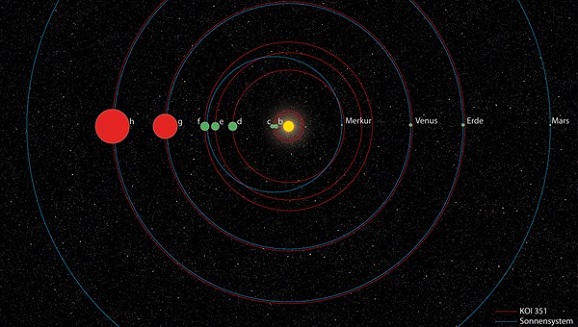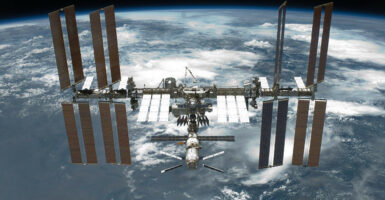Our Solar System Has A Twin, Sort Of
This article is more than 2 years old
 While we Earthbound creatures can still take pleasure in knowing we’re the only known living beings in the universe, we can no longer be so proud of our unique solar system, as European astronomers have discovered another planetary system that looks remarkably like our own, and is the first of its kind to be found. It isn’t an identical twin to our own, but I’m pretty sure we could make a cool “standing on opposite sides of a doorway” mirror illusion with it.
While we Earthbound creatures can still take pleasure in knowing we’re the only known living beings in the universe, we can no longer be so proud of our unique solar system, as European astronomers have discovered another planetary system that looks remarkably like our own, and is the first of its kind to be found. It isn’t an identical twin to our own, but I’m pretty sure we could make a cool “standing on opposite sides of a doorway” mirror illusion with it.
As you can probably imagine, this information was gleaned from the mounds of data collected by the Kepler space telescope before it malfunctioned earlier this year. The system is called KOI-351, and it features seven exoplanets. Scientists are hopeful it could give them a better idea of how these planetary systems form, since the jury is still out on that one.
According to Dr. Juan Cabrera, of the Institute of Planetary Research at the German Aerospace Center, this is “the first system with a significant number of planets (not just two or three, where random fluctuations can play a role) that shows a clear hierarchy like the solar system — with small, probably rocky planets in the interior and gas giants in the exterior.”
Three of these planets were picked out earlier this year, and it was their odd orbital periods that made astronomers think twice about what this information meant. The first three planets orbit around their star in 59, 210, and 331 days, respectively — which are similar to the orbits of Mercury, Venus, and Earth — but there is a variation that could be as large as 25.7 hours in each of their orbits. It was assumed that the gravitational pull of larger outer planets may have played a role in this, and Cabrera and his research team used complex computer algorithms to identify four other planets.
However, these planets have extremely quick orbital periods, ranging from 7 to 125 days, and the entire solar system could fit into the space between Earth and our sun. There’s almost no chance of intelligent life on these planets, but that doesn’t mean they won’t give much insight into our universe.
“We don’t know yet why this system formed this way,” Cabrera told Universe Today, “but we have the feeling that this is a key system in understanding planetary formation in general and the formation of the solar system in particular.”
After all this time identifying weird exoplanets, it’s nice to see something a little more familiar out there in the cosmos. The researchers are hoping this finding will assist them in getting their PLATO mission funded and off the ground to study this system further.
Just in case this wonderful news makes you too excited, here’s a children’s song about the solar system that is devoid of all emotions.












